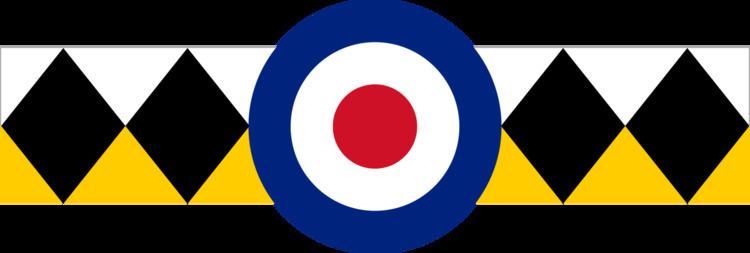Nickname(s) Eagle | Motto(s) First from the eyries | |
 | ||
Active 27 March 1917 – 19 January 191819 September 1940 – 29 September 194216 September 1950 – 30 April 1957 Allegiance United Kingdom United States (September 1942) | ||
No. 71 Squadron was a Royal Air Force aircraft squadron. The number has been used three times: once by the Royal Flying Corps for an Australian Flying Corps squadron; in the Second World War as an Eagle Squadron; and post-war as a fighter-bomber unit under the command of Royal Air Force Germany.
Contents
First World War
The first unit known by the British military as "No. 71 Squadron" was No. 4 Squadron, Australian Flying Corps (AFC), during the First World War. The squadron was formed at Point Cook, Victoria, Australia on 16 October 1916, after which it travelled to England. From 27 March 1917, while based at Castle Bromwich, it was designated "No. 71 Squadron" by the Royal Flying Corps, to avoid confusion with No. 4 Squadron, RFC. This name was never officially adopted by the Australian Imperial Force.
4 Sqn AFC arrived in France on 18 December 1917. With Sopwith Camels, it performed fighter sweeps, provided close air support and raided German airfields. In spite of its relatively short service during the First World War, 11 of its pilots became aces, including Captain Harry Cobby, the AFC's leading ace of the war, who was credited with destroying 29 aircraft and 13 observation balloons. Besides Cobby, Elwyn King, future Air Vice-Marshal Edgar McCloughry, Herbert Watson, Thomas Baker, Leonard Taplin, Thomas Barkell, future Air Marshal George Jones, Norman Trescowthick, and Garnet Malley served as aces in the unit.
On 19 January 1918, British usage of "No. 71 Squadron" for this unit also ceased, and it became No. 4 AFC at every level. The squadron spent some time with the Army of Occupation in Germany after the Armistice and was disbanded there at Bickendorf on 28 February 1919.
American Eagles
At the start of the Second World War before the US entered the war, there were a large number of American volunteers offering their services. No. 71 was formed at RAF Church Fenton on 19 September 1940 with Brewster Buffalos. Appraisal by Royal Air Force acceptance personnel criticised the Brewster Buffalo on numerous points, including lack of armament and pilot armour, poor high-altitude performance, engine overheating, unreliability and cockpit controls, while it was praised for its handling, roomy cockpit and visibility. The aircraft were deemed unsuitable for European conditions and Hawker Hurricanes replaced them from November 1940. The squadron became operational at RAF Kirton-in-Lindsey on 5 February 1941 and moved in April to RAF Martlesham Heath in Suffolk for operations over Europe. During May, it suffered its first loss when Mike Kolendorski was killed during a fighter sweep over the Netherlands. The intensity of operations stepped up with a move into No 11 Group of Fighter Command, being based at RAF North Weald in Essex by June 1941. On 2 July, William J. Hall became the first Eagle Squadron pilot to become a Prisoner of War (POW) when he was shot down during an escort mission. The squadron's first confirmed victory came on 21 July 1941 during a bomber escort mission, when Pilot Officer William R. Dunn destroyed a Messerschmitt Bf 109F over Lille. In August, the Spitfire Mk II replaced 71 Squadron's Hurricanes, before the squadron quickly re-equipped with the latest Spitfire Mk VB. The unit soon established a high reputation, and numerous air kill claims were made in RAF fighter sweeps over the continent during the summer and autumn of 1941. In December, the Squadron was rested back at Martlesham Heath, before a move to Debden in May 1942. When informed of the attack on Pearl Harbor, most of the Eagle Squadron pilots wanted to immediately join the fight against Japan. Representatives from 71 and 121 Squadrons went to the American Embassy in London and offered their services to the United States. The pilots from 71 Squadron decided they wanted to go to Singapore to fight the Japanese and a proposal was put to RAF Fighter Command, but it was turned down. On 29 September 1942 the squadron, together with the other two Eagle squadrons, was transferred to the US Army Air Forces, becoming the 334th Fighter Squadron of the 4th Fighter Group.
Into the jet age
On 16 September 1950 a new 71 Squadron was formed at RAF Gütersloh with de Havilland Vampire fighter-bombers, joining the Second Tactical Air Force. In October 1953 it became a "day fighter" unit with the North American Sabre. The Sabres were replaced by Hawker Hunters in April 1956. The squadron moved to RAF Bruggen in May 1956 and disbanded on 30 April 1957.
